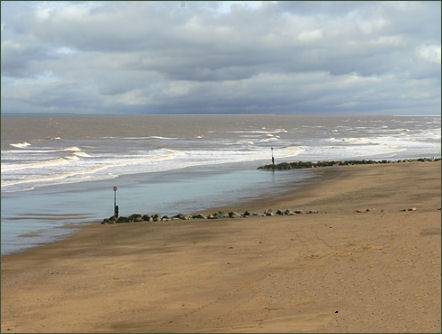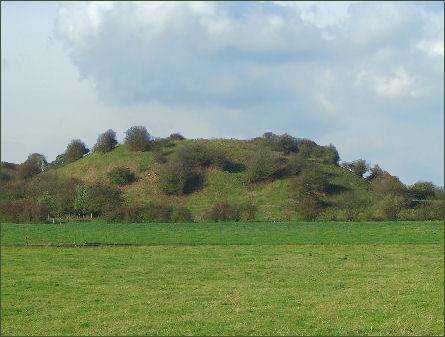Skipsea
OS grid reference:- TA 165 549
 The coastal village of Skipsea lies around 10 miles (16 km) to the south of the town of Bridlington and 6 miles (9.7 km) north of Hornsea
The coastal village of Skipsea lies around 10 miles (16 km) to the south of the town of Bridlington and 6 miles (9.7 km) north of Hornsea
The first recorded mention of the village occurs in the twelfth century, but a settlement is known to have existed much earlier than this. The name Skipsea is of Scandinavian origin and this part of the English coast was widely settled by Viking invaders prior to the Norman Conquest.
There is some evidence to suggest that the name refers to its original Viking meaning of "Ship Lake", but the closest literal meaning of Skipsea is "a lake navigable by ships". This refers to the village's original location on the edge of a lake which was situated slightly inland from the sea. This land has since been lost to the sea due to the heavy erosion which occurs on this coast, thereby making Skipsea a seaside village.
By the end of the eleventh century, both Skipsea Castle and a church had been constructed, which encouraged the growth of the settlement. In the thirteenth and fourteenth centuries, local markets and fairs were granted.
Skipsea has a pleasant sandy beach, pubs, a post office, general store and tea rooms. Many of the houses in the village use cobbles from the sea shore in both brickwork on the house exterior as well as for decorative purposes in brick walls around gardens.
The squat-towered Church of All Saints stands on a mound looking out over the former mere of Skipsea Castle. The first church to occupy the site was built in 1190, under the patronage of Odo, Count of Albemarle. It was later granted to Aumale Abbey. This early building was completely rebuilt in the fourteenth century, the battlemented clerestories were added in the fifteenth century. Carved heads by the east window are believed to perhaps represent Edward I and Eleanor of Castile.
The outside south wall of the nave features a mass dial and a consecration cross. The mass dial has a set of lines radiating outwards, but covering only 180 degrees. The consecration cross contains radiating lines covering a full 360 degrees.The oldest interior feature of the building is a medieval incised grave slab which is situated in a corner under the tower. It is believed to be a lid from the coffin of a medieval priest.
Skipsea Castle
 The remains of Skipsea Castle are situated just outside of the village.
The remains of Skipsea Castle are situated just outside of the village.
The castle was built in 1086 by Drogo de la Beuvriere, who was married to the niece of William the Conquerer. The castle was constructed to secure the newly conquered region following William the Conqueror's Harrying of the North and to defend against any potential Danish invasion. It is the finest example of a Norman motte and bailey to survive in England although all that now remains is a grassed mound.
The castle motte rises to 11 metres high and would have had a gate house on its south west side. The bailey covers over 8 acres of land and is defended by a bank and an outer ditch. The motte and the bailey were separated by Skipsea Mere, an artificial lake which was linked to the sea during the medieval period via a navigable channel.
Drogo de la Beuvriere was accused of poisoning his wife and William the Conqueror granted the castle to Odo, the Count of Aumale. In 1096 it passed to Arnulf de Montgomery, but later returned to the Aumale fsmily's ownership in 1102. In 1221 the castle's then owner, William de Forz, Count of Aumale, rose in rebellion against King Henry III. The castle was captured by royalist forces and destroyed on the orders of the king.
Skipsea Castle is managed by English Heritage and is open to visitors.
Towns and Villages of Yorkshire
